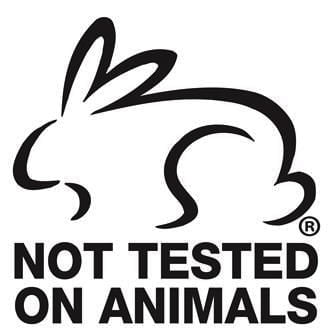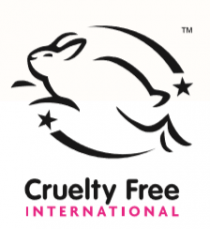This self-reflective examination of animal testing in the cosmetic industry was put together by the team at Flawless Lashes by Loreta, a UK-based Lash Artist training academy that not only avoids the practice of animal testing cosmetics in its own products, but also aims to help raise awareness of the issue.
This article is not sponsored, and there are no affiliate links. It aims to help you learn more about animal testing makeup issues, and to avoid brands that test on animals.
Animal testing in the cosmetics and beauty industry is one of those things that should stay buried deep in the past, but, sadly, is practiced daily by companies around the globe.
According to PETA, over 100 million animals (including mice, rats, dogs, cats, rabbits, hamsters, monkeys, fish, and birds) are killed in US laboratories alone each year. A great number of those animals are tested on in the making of beauty products.
The silver lining is that more and more brands around the globe are taking their share of responsibility and shifting to cruelty-free beauty products. However, even though the global size of the cruelty-free cosmetics market is estimated to reach USD 10 billion by 2024, there is still a long way to go.
Therefore, in this article, we’ll dive deeper into some core information both beauty companies and consumers should be aware of regarding animal testing in the beauty industry.

What is animal testing in the beauty industry?
To determine whether a cosmetics product is safe to use for human beings, beauty companies worldwide still rely on animal testing.
Animal testing is an activity that involves any scientific experiment that is likely to cause pain, anxiety, or any other harm to the animal. During the experiment, most animals are severely hurt, while die or are killed shortly thereafter.
Animal testing has been criticized for years by various governments and animal protection organizations. For instance, the EU banned animal testing back in 2009 and prohibited selling animal-tested beauty products that date anywhere in the world in 2013.
Given all that, it is key for us, consumers, to choose beauty products consciously and with animals’ rights in mind.
Why is it important to avoid animal-tested beauty products?
There are two main reasons why opting for animal-tested products is a bad idea:
- Animal testing is cruel and harmful to animals.
- Animal testing is no longer the most effective way to determine the quality of the product.
The argument many brands that test on animals use is that animal testing is the most effective way to examine the product’s safety.
However, studies around the globe have already proved that testing products on animals is not reliable for human health research.
Therefore, animals are harmed during the testings, but there is no guarantee that our health is protected from potentially harmful ingredients.

What are the most common animal-based ingredients used in beauty products?
When it comes to animal rights in the beauty industry, it is also key to be aware of some of the main animal-based ingredients used in beauty products:
- KERATIN. Taken from the hair and horns of various animals, keratin is used in shampoos and conditioners to strengthen hair and nails.
- TALLOW is animal fat used in many nail polishes, soups, eye makeup, and foundations. Moreover, this ingredient can also be called oleic acid, oleyl sterate, and oleyl oleate.
- BEESWAX (CERA ALBA) is most commonly used to make lip balms, soaps, moisturizers. This ingredient increases the skin’s absorption of moisture.
- GUANINE is used to make a shimmering effect in eyeshadows.
- LANOLIN comes from sheep’s wool, and it is used to make lip balms, lipsticks, and lip glosses.
- CARMINE gives lipsticks, blushes, and nail polishes that vibrant red color. It comes from crushing insects called cochineals. You can also spot this ingredient as natural red 4, E120, and C.I 75470.
- SHELLAC is another ingredient that comes from insects. More precisely, lac bugs. Shellac is famous due to the shine and strength it gives to nail polishes.
Choosing products that contain any ingredient mentioned above could mean that animals were both tested on and hurt while making the product.
How to tell when cosmetics are cruelty-free?
Given the damage animal-tested and animal-based products have, let’s see how to choose cruelty-free beauty products.
There are a few different ways to determine whether your chosen beauty products are cruelty-free:
- Do your research.
When choosing certain beauty products that have not been tested on animals, you should learn more about the specifics of how they were made.
For instance, when it comes to lash extensions, on the market, you can find:
- mink lashes;
- silk lashes;
- faux lashes.
To make a cruelty-free choice, opt for either silk or faux lashes, as mink lashes are made from real minks, taking fibres from their tails.
The key here is always checking the ingredient list and looking for alternatives.
With the market having so much to offer, you can always find one made ethically and with no harm to the animals.
- Check the packaging to find a certified cruelty-free bunny logo.

If the beauty product is cruelty-free, you should be able to find a bunny logo somewhere on the packaging.
However, as getting certified for the bunny logo tends to get pricey, some brands that don’t test on animals may not have it.
In this case, use other methods mentioned below.
- Check cruelty-free databases online.
Numerous databases keep the log of the brands that do not test on animals.
We recommend checking Beauty without bunnies by PETA or one called Leaping Bunny.


Keep in mind, though, that different databases may have other brands on their lists. Hence, it’s a good idea to check at least a few of them.
- Use cruelty-free apps to check the products, like one by PETA.
As most of us carry our mobile devices anywhere we go, downloading the app and scanning the product’s barcode may be one of the easiest solutions you could go for.
Again, keep in mind that different apps may have other brands included in their lists.
- Reach out to the company.
If you are purchasing from a smaller local brand, and none of those mentioned above tips apply, try reaching out to the company.
This method may not be the best option if you are tight on time, though.
Bottom line
Altogether, animal testing in the beauty industry is still a big problem that both companies and consumers have to solve.
Becoming aware of the harm done to the animals, learning more about the alternatives, and opting for cruelty-free products are some of the first steps one can take to make a lasting change.